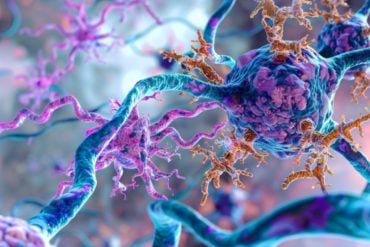Summary: Researchers analyze the language of dictators and hate groups, uncovering a common use of dehumanizing metaphors to fuel hatred. Such metaphors ‘switch on’ neural pathways in the brain, bypassing higher cognitive reasoning centers and steering focus towards certain ideas.
These mental patterns can become entrenched over time, making it challenging for individuals to revise their views even in the face of contradicting evidence.
The research underscores the potential dangers posed by such language, including the escalation of violence and political instability.
Key Facts:
- Dehumanizing metaphors used in the speech of dictators and hate groups instill and propagate hatred by exploiting neural circuits in the brain.
- Over time, these neural circuits harden, making it nearly impossible to reverse these ingrained ideas and resist conspiracy theories or big lies.
- Research suggests that those who strongly believe in such narratives are unlikely to change their minds, even when confronted with evidence contradicting their beliefs.
Source: Taylor and Francis Group
In Politics, Lies and Conspiracy Theories, released today, Marcel Danesi Ph.D., a professor of semiotics and linguistic anthropology at the University of Toronto, Canada, analyzes the speeches of dictators including Mussolini, Stalin, Putin and Hitler, as well as prominent hate groups.
His research finds there is one thing they all have in common: they all use dehumanizing metaphors to instill and propagate hatred of others.
“The intent of such speech is to attack those who do not belong to the mainstream, such as racial minorities, or people of different sexual orientations,” says Danesi.
Powerful language
For example words like ‘pests’, ‘reptiles’ and ‘parasites’ were used by the Nazi regime to compare outsiders and minorities to animals.
Meanwhile in August 2017, when groups of white supremacists arrived in the college town of Charlottesville to participate in a ‘Unite the Right’ rally, the protesters used both animal and dirt metaphors when they claimed that they were fighting against the ‘parasitic class of anti-white vermin’ and the ‘anti-white, anti-American filth.’
With the rise of populist and far-right political movements in the 2010s, the use of dehumanizing metaphors to engender hatred of foreigners or of those who are different in some way has spread worldwide.
In 2016, during a state-orchestrated public campaign against refugees and migrants in Hungary, the prime minister, Viktor Orbán, characterized them as a poison.
Our brain wiring
Danesi’s research shows that dehumanizing metaphors like these are so powerful because they tap into and ‘switch on’ existing circuits in the brain that link together important and salient images and ideas. In effect, metaphors bypass higher cognitive reasoning centers, directing our thoughts to focus on certain things whilst ignoring others.
According to Danesi, the more these circuits are activated the more hardwired they become, until it becomes almost impossible to turn them off. The same is true of conspiracy theories – research shows that people who believe them develop more rigid neural pathways, meaning they find it difficult to rethink situations.
“When we come across a big lie or a conspiracy theory, it can shape our ideas without us even being aware of it,” says Danesi.
“By being exposed to particular metaphors, we may develop hostile feelings towards specific groups – this is why hate groups use metaphors to turn the switches on, so as to motivate people to violent activism.”
Entrenched ideas
Unfortunately, research into this brain wiring also shows that once people begin to believe lies, they are unlikely to change their minds even when confronted with evidence that contradicts their beliefs.
On the contrary, these people will instead seek out information that confirms their beliefs, avoid anything that is in conflict with them, or even turn the contrasting information on its head, so as to make it fit their beliefs.
For this reason, it is unlikely that people with strong convictions will ever change their minds about anything.
According to Danesi, this can have devastating consequences.
“When lies are used to generate hate, harmful behaviors tend to result, including violence and genocide against the target individual or groups,” says Danesi.
“The spread of lies is also becoming a powerful factor in generating political and social instability worldwide, destabilizing democracies.”
What can be done?
Is there anything we can do to protect ourselves from the power of lies? According to Danesi, the best thing we can do is to understand the metaphors of the other party, and to examine one’s own metaphors.
However, history and science tells us that it is unlikely to work – research shows that once a lie is accepted as believable, the brain becomes more susceptible to subsequent lying.
About this psychology and neuroscience research news
Author: Becky Parker-Ellis
Source: Taylor and Francis Group
Contact: Becky Parker-Ellis – Taylor and Francis Group
Image: The image is credited to Neuroscience News
Original Research: “Politics, Lies and Conspiracy Theories:A Cognitive Linguistic Perspective” by Marcel Danesi is available online.
Abstract
Politics, Lies and Conspiracy Theories:A Cognitive Linguistic Perspective
Politics, Lies and Conspiracy Theories: A Cognitive Linguistic Perspective shows how language influences mechanisms of cognition, perception, and belief, and by extension its power to manipulate thoughts and beliefs.
This exciting and original work is the first to apply cognitive linguistics to the analysis of political lies and conspiracy theories, both of which have flourished in the internet age and which many argue are threatening democracy. It unravels the verbal mechanisms that make these “different truths” so effective and proliferative, dissecting the verbal structures (metaphor, irony, connotative implications, etc.) of a variety of real-life cases concerning politicians, conspiracy theorists, and influencers. Marcel Danesi goes on to demonstrate how these linguistic structures “switch on” or “switch off” alternative mind worlds.
This book is essential reading for students of cognitive linguistics and will enrich the studies of any student or researcher in language and linguistics more broadly, as well as discourse analysis, rhetoric, or political science.








